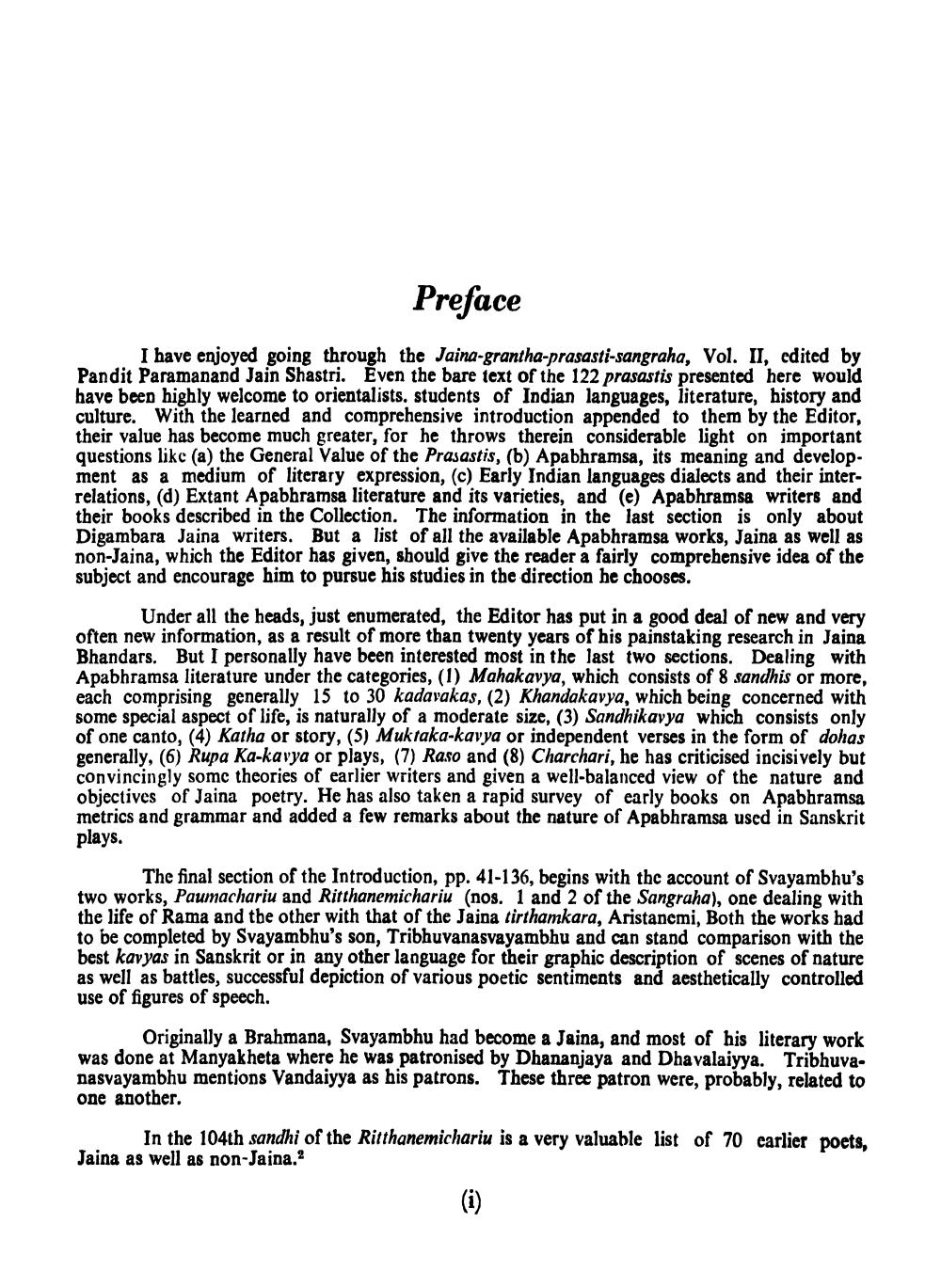________________
Preface
I have enjoyed going through the Jaina-grantha-prasasti-sangraha, Vol. II, edited by Pandit Paramanand Jain Shastri. Even the bare text of the 122 prasastis presented here would have been highly welcome to orientalists, students of Indian languages, literature, history and culture. With the learned and comprehensive introduction appended to them by the Editor, their value has become much greater, for he throws therein considerable light on important questions like (a) the General Value of the Prasastis, (b) Apabhramsa, its meaning and development as a medium of literary expression, (c) Early Indian languages dialects and their interrelations. (d) Extant Apabhramsa literature and its varieties, and (e) Apabhramsa writers and their books described in the Collection. The information in the last section is only about Digambara Jaina writers. But a list of all the available Apabhramsa works, Jaina as well as non-Jaina, which the Editor has given, should give the reader a fairly comprehensive idea of the subject and encourage him to pursue his studies in the direction he chooses.
ons, a medium General Value of the the introduction language Present
then its val Indian bhramsiderablethen
has
a list
Under all the heads, just enumerated, the Editor has put in a good deal of new and very often new information, as a result of more than twenty years of his painstaking research in Jaina Bhandars. But I personally have been interested most in the last two sections. Dealing with Apabhramsa literature under the categories, (1) Mahakavya, which consists of 8 sandhis or more, each comprising generally 15 to 30 kadarakas, (2) Khandakavya, which being concerned with some special aspect of life, is naturally of a moderate size, (3) Sandhikavya which consists only of one canto, (4) Katha or story, (5) Muktaka-kavya or independent verses in the form of dohas generally, (6) Rupa Ka-kavya or plays, (7) Raso and (8) Charchari, he has criticised incisively but convincingly some theories of earlier writers and given a well-balanced view of the nature and objectives of Jaina poetry. He has also taken a rapid survey of early books on Apabhramsa metrics and grammar and added a few remarks about the nature of Apabhramsa used in Sanskrit plays.
The final section of the Introduction, pp. 41-136, begins with the account of Svayambhu's two works, Paumachariu and Ritthanemichariu (nos. 1 and 2 of the Sangraha), one dealing with the life of Rama and the other with that of the Jaina tirthamkara, Aristanemi, Both the works had to be completed by Svayambhu's son, Tribhuvanasvayambhu and can stand comparison with the best kavyas in Sanskrit or in any other language for their graphic description of scenes of nature as well as battles, successful depiction of various poetic sentiments and aesthetically controlled use of figures of speech.
Originally a Brahmana, Svayambhu had become a Jaina, and most of his literary work was done at Manyakheta where he was patronised by Dhananjaya and Dhavalaiyya. Tribhuvanasvayambhu mentions Vandaiyya as his patrons. These three patron were, probably, related to one another.
In the 104th sandhi of the Ritthanemichariu is a very valuable list of 70 carlier poets. Jaina as well as non-Jaina.?




